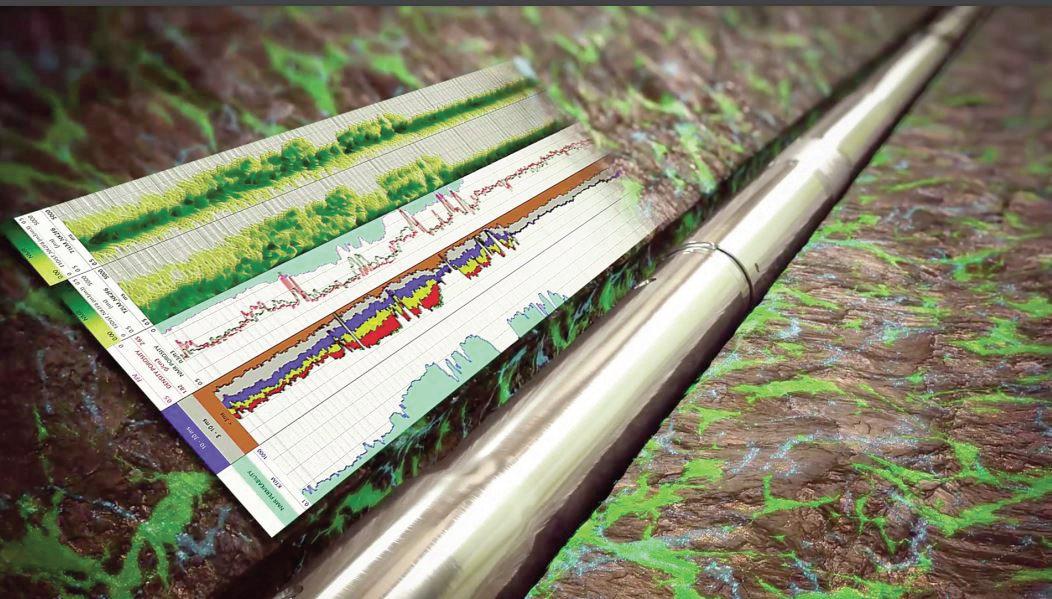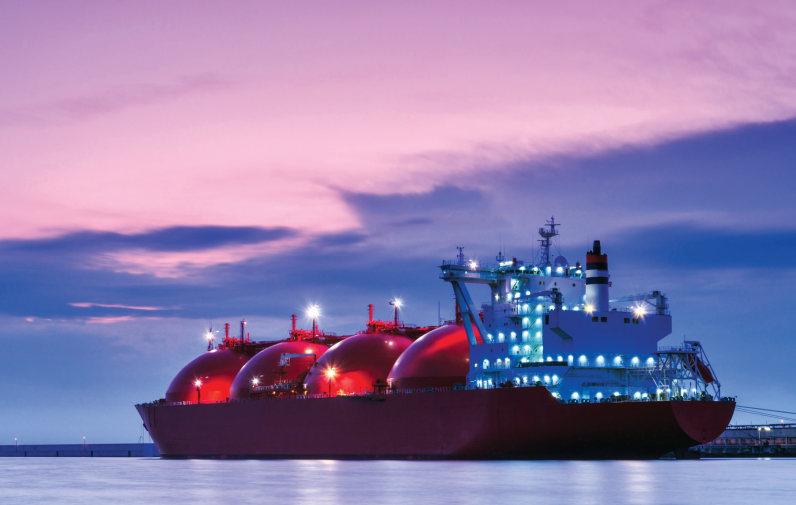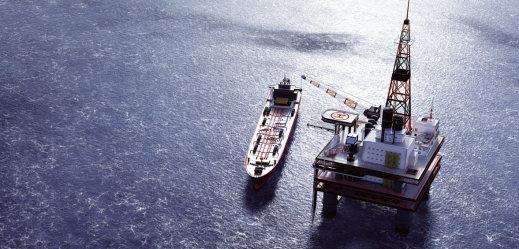
7 minute read
James Scullion, OSSO
A CLEARLY DEFINED ROADMAP FOR GROWTH ACCELERATION
James Scullion, CEO of OSSO (formerly Centrifuges Un-limited), describes the ambitious growth plan OSSO aims to deliver by expanding oil and gas presence on-and-offshore, highlighting the challenges operators face and the heat transfer solutions for maximum drilling efficiencies. Deblina Roy reports.
ORA: As Centrifuges Unlimited rebrands as OSSO, what is OSSO’s “new ambitious growth plan” to expanding its oil and gas presence on-and-offshore in the near-to-medium term?
James Scullion: We have a clearly defined roadmap for growth acceleration that takes into account a number of factors. The first is to ensure that we continue to support and grow our core oil and gas business by way of international expansion, equipment enhancement and building key strategic partnerships that will further enhance our offering to clients. In addition to this, we are already investing in new technologies and equipment to support our existing client base.
ORA: You said, “Operators are facing complex challenges whether it be environmental or financial and we have the proactive solutions to support them.” What kinds of challenges are operators facing right now?
James Scullion: There are a number of challenges facing the industry right now; the more significant long-term change we are seeing is a global shift towards the provision of cleaner, more sustainable energy streams. The demand to provide solutions that help operators meet environmental targets, whether it be their own or government-driven mandates, will only increase over the coming years. As an industry with a complex and diverse supply chain, businesses need to ensure they have at the very least identified what they need to do in order to meet those targets.
OSSO Image Credit:
According to Scullion, there is a wealth of opportunity in Africa, and OSSO aims to rebuild relationships with local partners.
ORA: How are OSSO’s mechanical separation and heat transfer solutions effective in maximising drilling efficiencies while minimising environmental impact?
James Scullion: Because we use mechanical separation, we are effectively reducing additional waste streams, as our equipment does not require filters to be changed out and replaced. The efficiency of our equipment helps to enhance drilling time by processing waste streams at the source, reducing backloading of slopwater onshore and, in turn, reducing the need to skip and ship from an environmental standpoint.
Our heat transfer solutions, including our unique remote temperature control system AutoCul, help operators to maintain greater control of the mud temperature. AutoCul enables continuous temperature monitoring and auto adjustment, thus removing the need for manual handling, providing a faster, more accurate and efficient way of monitoring the mud temperature. Our mud coolers help reduce the release of fumes and harmful vapours, providing a safer, more enjoyable work environment. By reducing and maintaining downhole temperatures, you can maximise the longevity and performance of the downhole tools, meaning you can drill deeper and for longer, therefore reducing downtime by not pulling out of the hole so frequently.
ORA: Apart from oil and gas, how you plan to broaden access into the wider energy and industrial markets?
James Scullion: This is something we are actively working on now. Across the wider energy market, we have identified areas where our skills, equipment and knowledge could easily be transferred. An example of this is geothermal; we are starting to see an increase in this form of energy conversion primarily because it’s seen as a cleaner energy resource, and with our years of knowledge and experience within oil and gas we can with little effort move into this adjacent market.
ORA: What are you doing in Africa at the moment? What is OSSO’s future plan to expand into Africa’s oil and gas horizons?
James Scullion: We previously worked predominantly in West Africa but also Egypt and South Africa. Looking ahead, we see a wealth of opportunity, and our medium- to long-term view would ultimately see us building relationships with local partners in key growth areas across the region.
Despite financial cutbacks and operational difficulties as a result of the pandemic, EPC projects in Africa’s oil and gas industry provide good opportunities, and the drive towards localising engineering, construction and fabrication continues. Louise Waters reports.
THE COVID-19 PANDEMIC has had a severe impact on Africa’s oil and gas project market, forcing delays and cutbacks while on an operational level hampering activities such as construction, engineering, fabrication and manufacturing.
However, Africa Energy Chamber’s African Energy Outlook 2021 report forecasts that as far as the services sector is concerned, EPCI companies are expected to benefit the most from future spending with EPCI “the only segment expected to buck the trend of declining expenditure on the back of the LNG facilities expected to be constructed towards 2025.”
Subsea tiebacks and LNG projects will remain the pillar of future industry spending, it says.
As far as recently-awarded EPC contracts are concerned, TechnipFMC was awarded an EPCI contract valued between US$75 and US$250mn in February 2021 for the North El Amriya and North Idku (NEA/NI) concession subsea tieback gas field project offshore Egypt. TechnipFMC will design, manufacture, deliver and install subsea equipment.
While in January, Cabinda Gulf Oil Company (CABGOC), the wholly-owned Angolan subsidiary of Chevron, awarded Subsea7 a contract valued between US$150mn and US$300mn to construct and install the Lean Gas Platform (LGP) system for the Sanha Lean Gas Connection (SLGC) project offshore Angola. Subsea 7 anticipates that fabrication will take place at Sonamet’s yard in Lobito, Angola from late 2021 to 2022.
In May 2020 Saipem, in joint venture with Daewoo E&C and Chiyoda, won an EPC contract for the Nigeria LNG Train 7 project, to be executed at Bonny Island LNG complex in Nigeria. The contract, awarded by Nigeria LNG (NLNG), is reported to be worth more than US$4bn. The project, which is expected to boost Nigeria's LNG output by almost a third, consists of the construction of one complete LNG train and one additional liquefaction unit with a total capacity of around eight MTPA, plus other extensive associated utilities and infrastructure.
Stefano Cao, Saipem’s CEO, commented that the award proved the “validity of the management methods of COVID-19 emergency, thanks to the flexibility of our organisational model and the practice of our people to work remotely.”
A project that is likely to result in significant EPC contracts is the Lake Albert Development project in East Africa, which encompasses the Tilenga and Kingfisher upstream oil project in Uganda and the construction of the East African Crude Oil Pipeline (EACOP) in Uganda and Tanzania which will transport oil from the oilfields in Uganda to the port of Tanga in Tanzania. The main engineering, procurement and construction contracts are expected to be awarded shortly. Total, which operates the Tilenga project, stresses that it will create significant in-country value for both countries.
Local capacity building
Local content is an important factor in the award of EPC and fabrication contracts. When Aquaterra Energy won a contract from CABCOC to design and support installation of an offshore platform off the coast of Angola in February 2020, Sea Swift was chosen for its modular design to minimise build and implementation time and for the ability to fabricate the platform locally in Cabinda, Angola, according to the company.
Stewart Maxwell, technical director at Aquaterra Energy highlighted the “growing importance of flexible platform fabrication that can not only help local content rules but also reduce environmental impact via innovative installation options.”
In Nigeria, the Nigerian Content Development and Monitoring Board (NCDMB) has been instrumental in encouraging local engineering, fabrication and manufacturing capacity. Timipre Slyva, junior minister petroleum resources and chairman of the government council of the NCMDB, noted that Nigeria can now handle fabrication of more than 60,000 units a year with its array of world-class fabrication yards, with the infrastructure in place for the integration of FPSO in country. He added that the delivery of substantial elements of the Total Egina project and the integration of six modules in the country are as a result of local content intervention. Other achievements have included the construction of oil and gas parks in Bayelsa and Cross River States.
All installation and construction is taking place in Nigeria for the NLNG Train 7 project, which is expected to create more than 12,000 direct jobs. More than 70,000 tonnes of manufacturing materials will be produced in country. NLNG stressed that the project will support the development of local engineering and fabrication capacity and in building and maintaining LNG plants.
Elsewhere, South Africa’s Saldanha Bay Industrial Development Zone on South Africa’s western cape, is making progress. Specialised manufacturing and fabrication facilities are currently under construction, with a specialised corrosion protection facility already completed.










